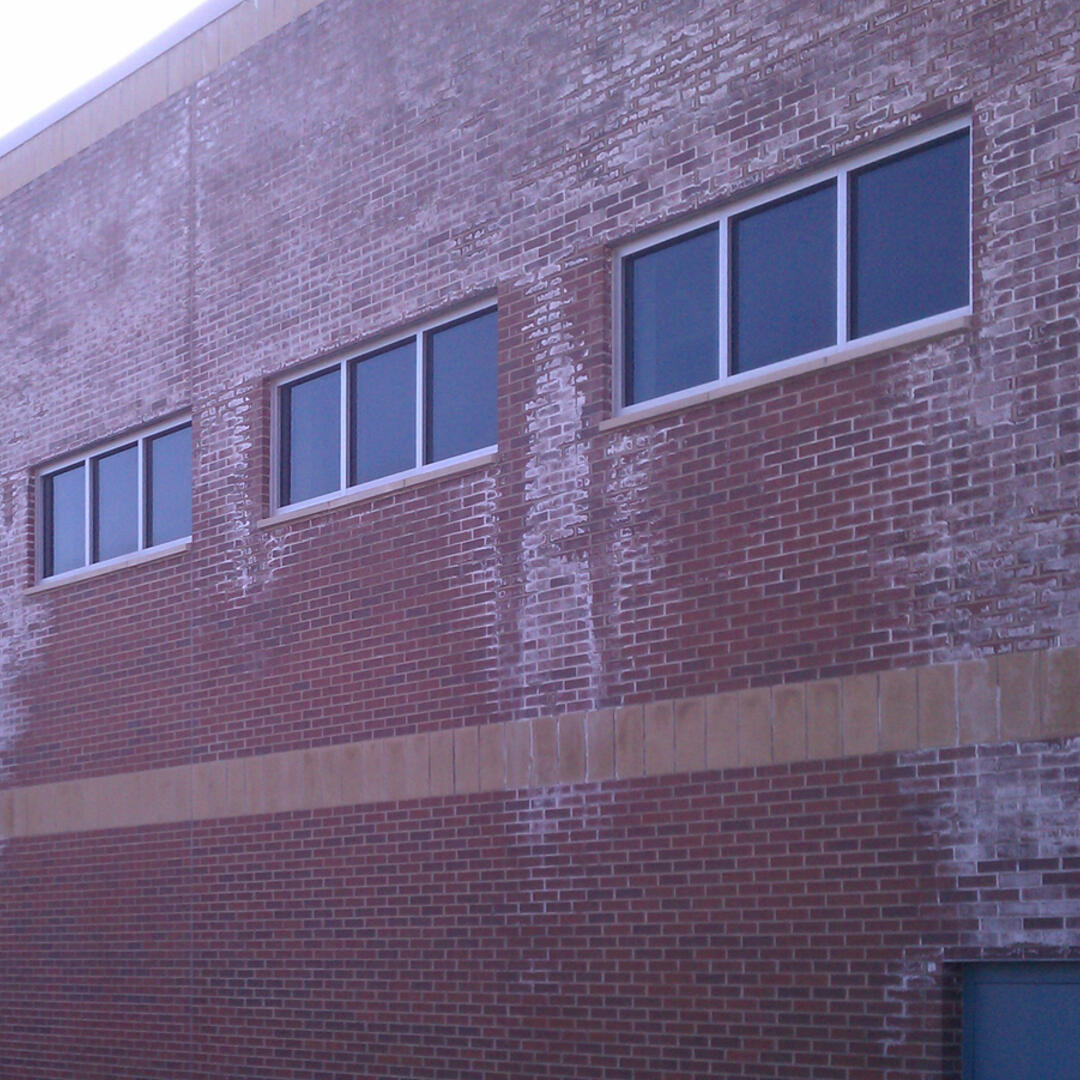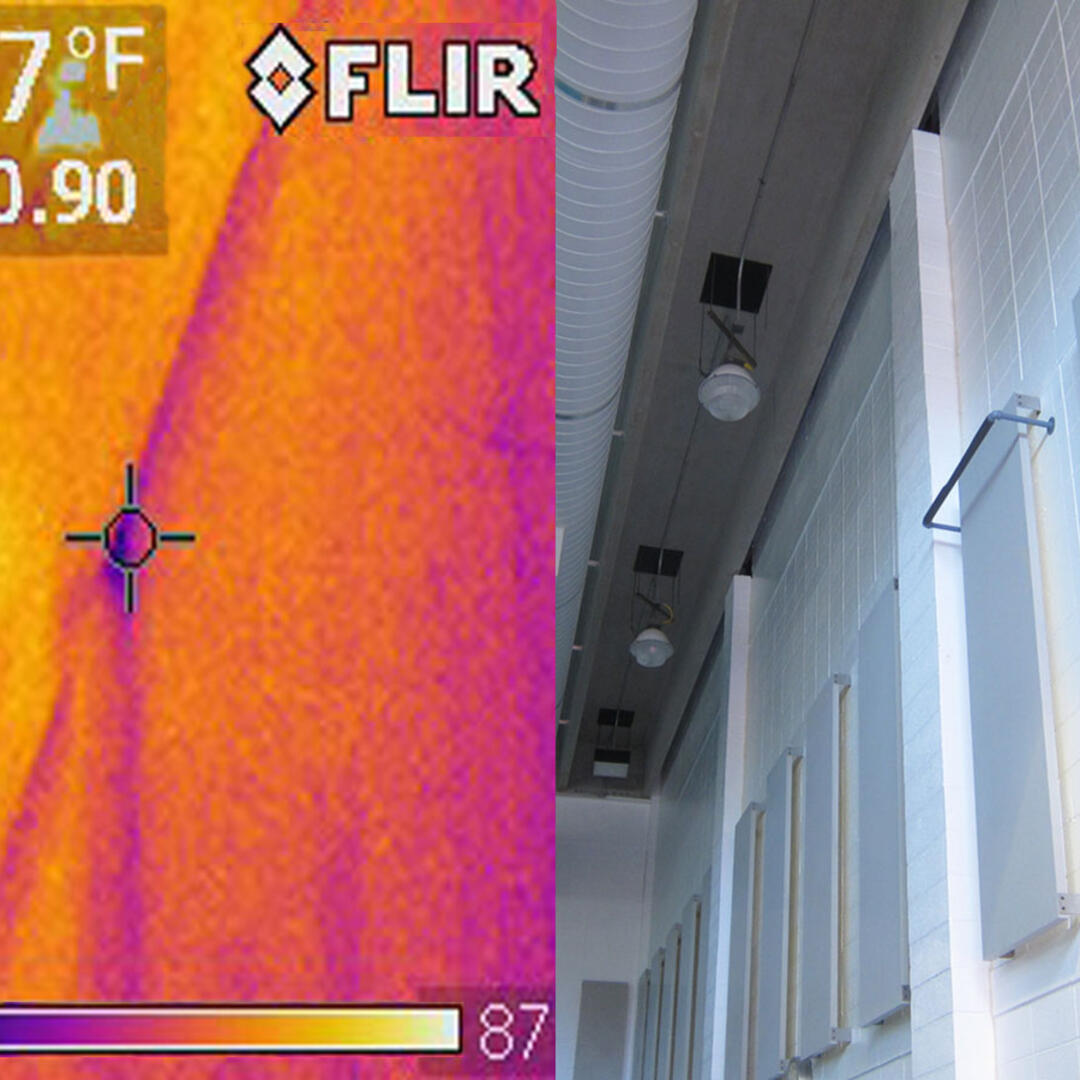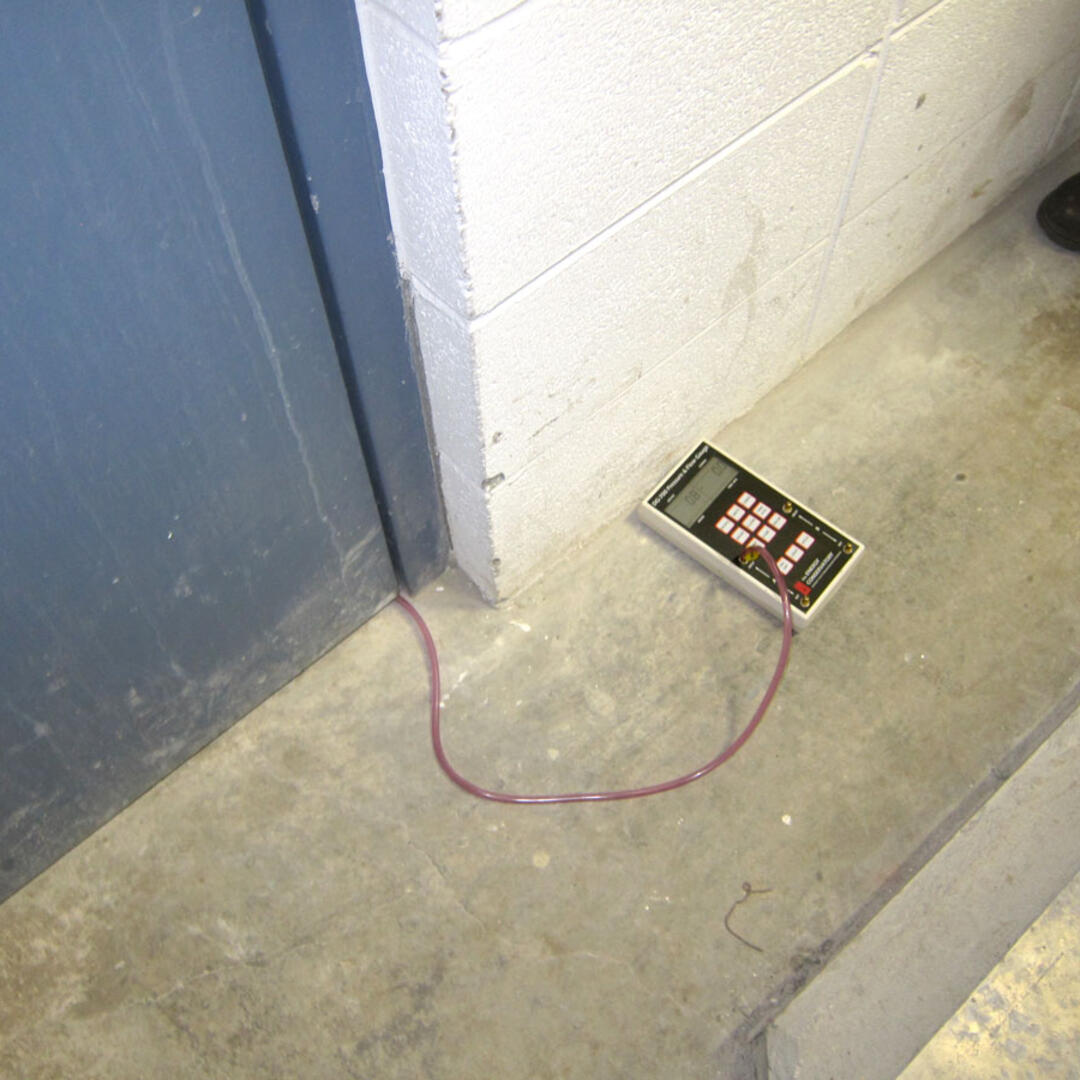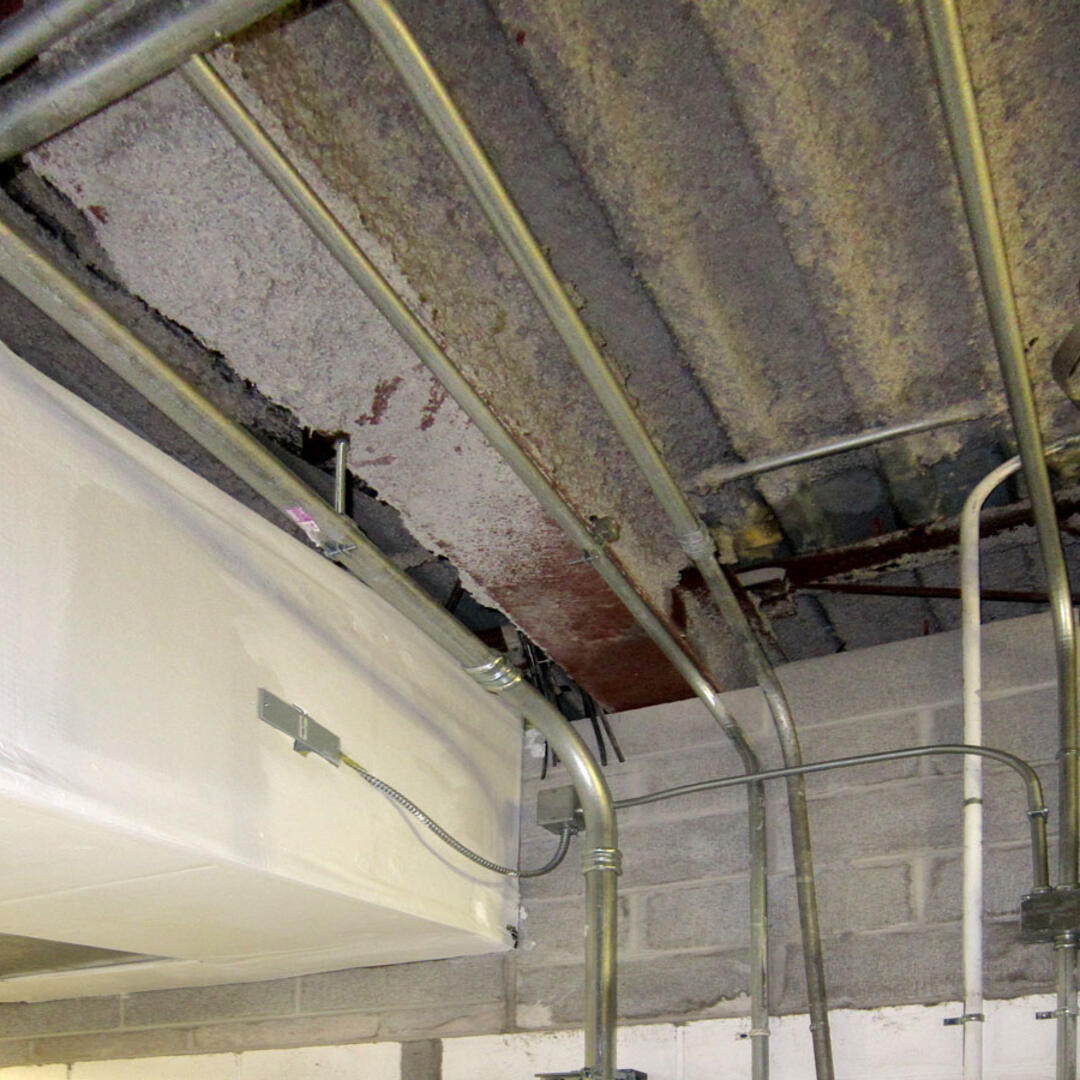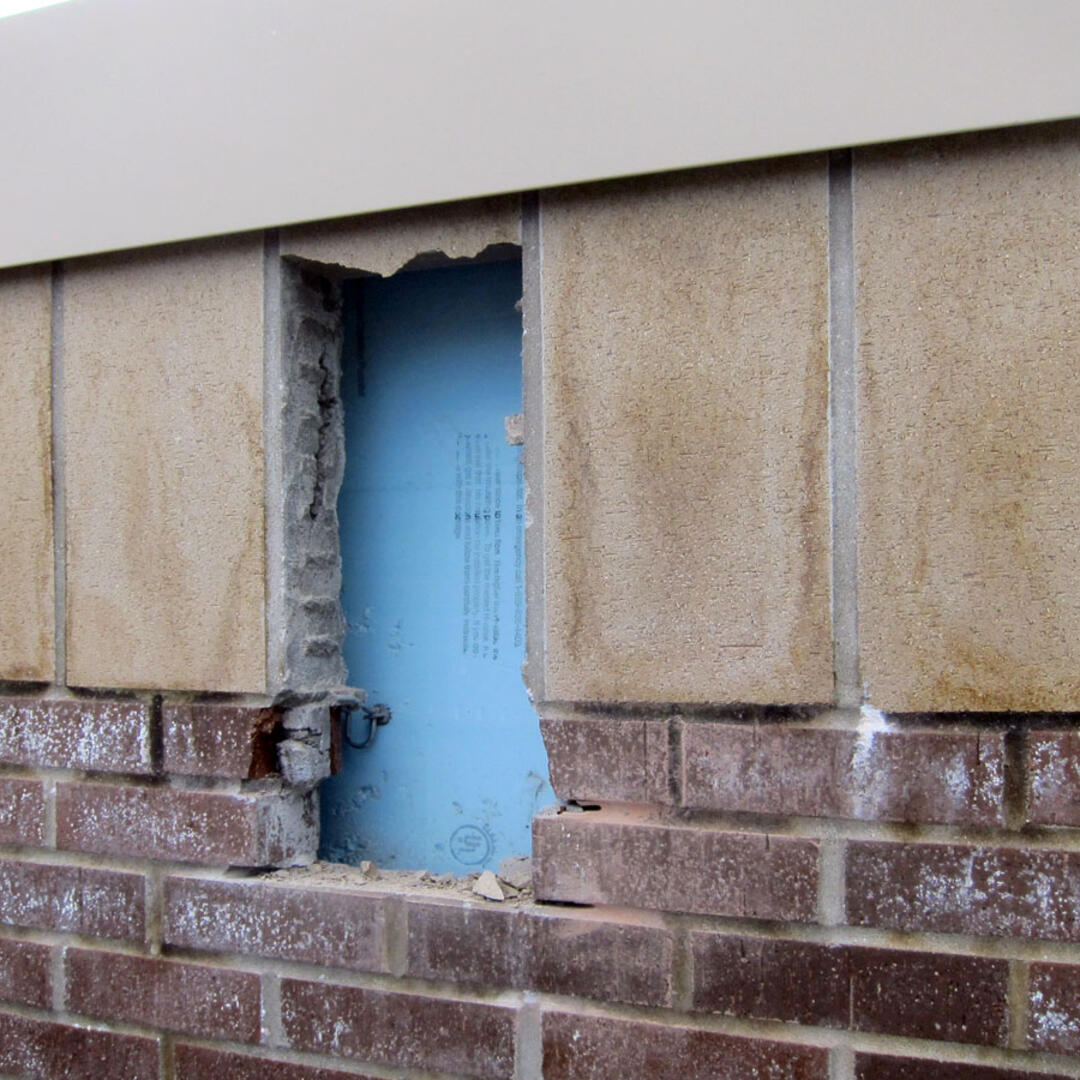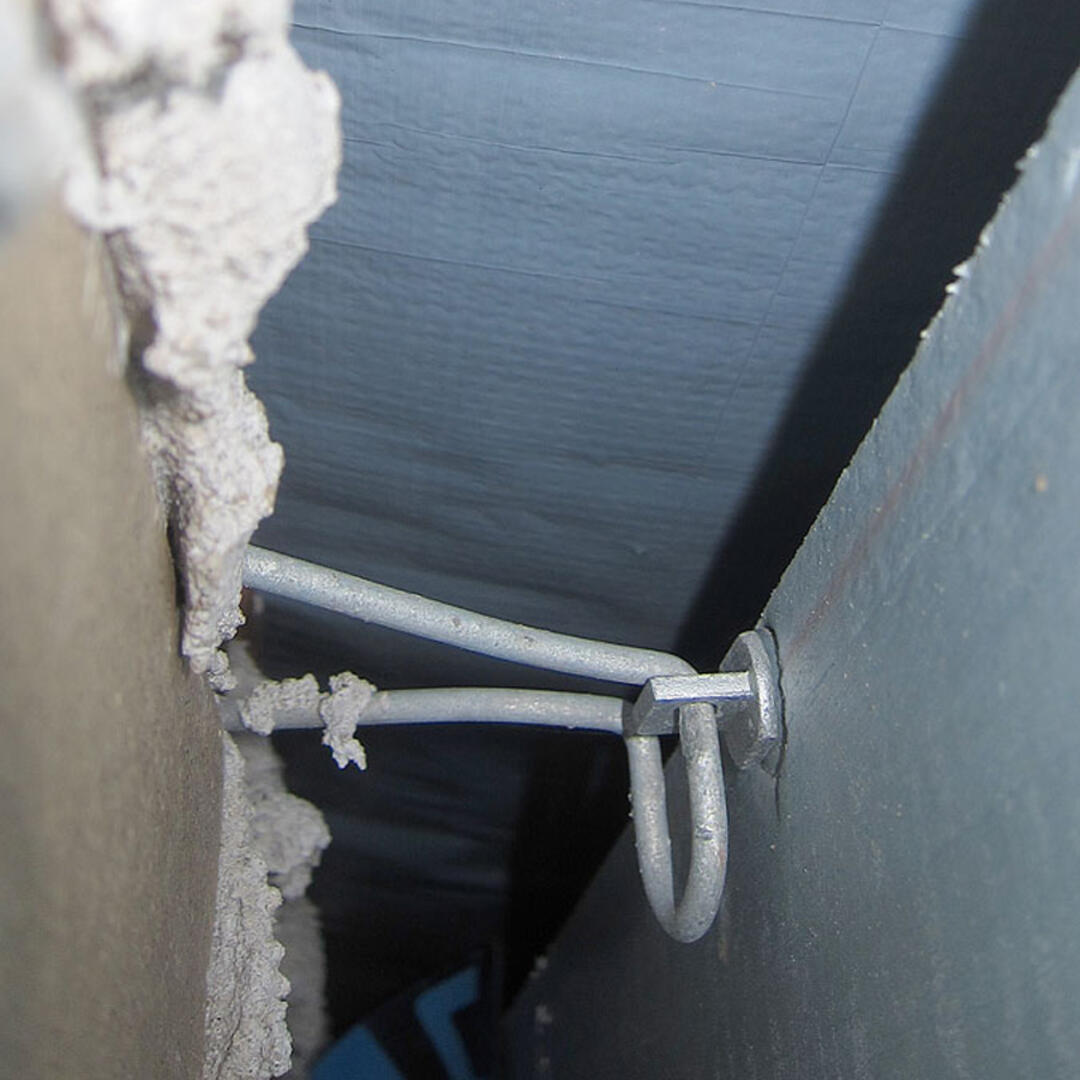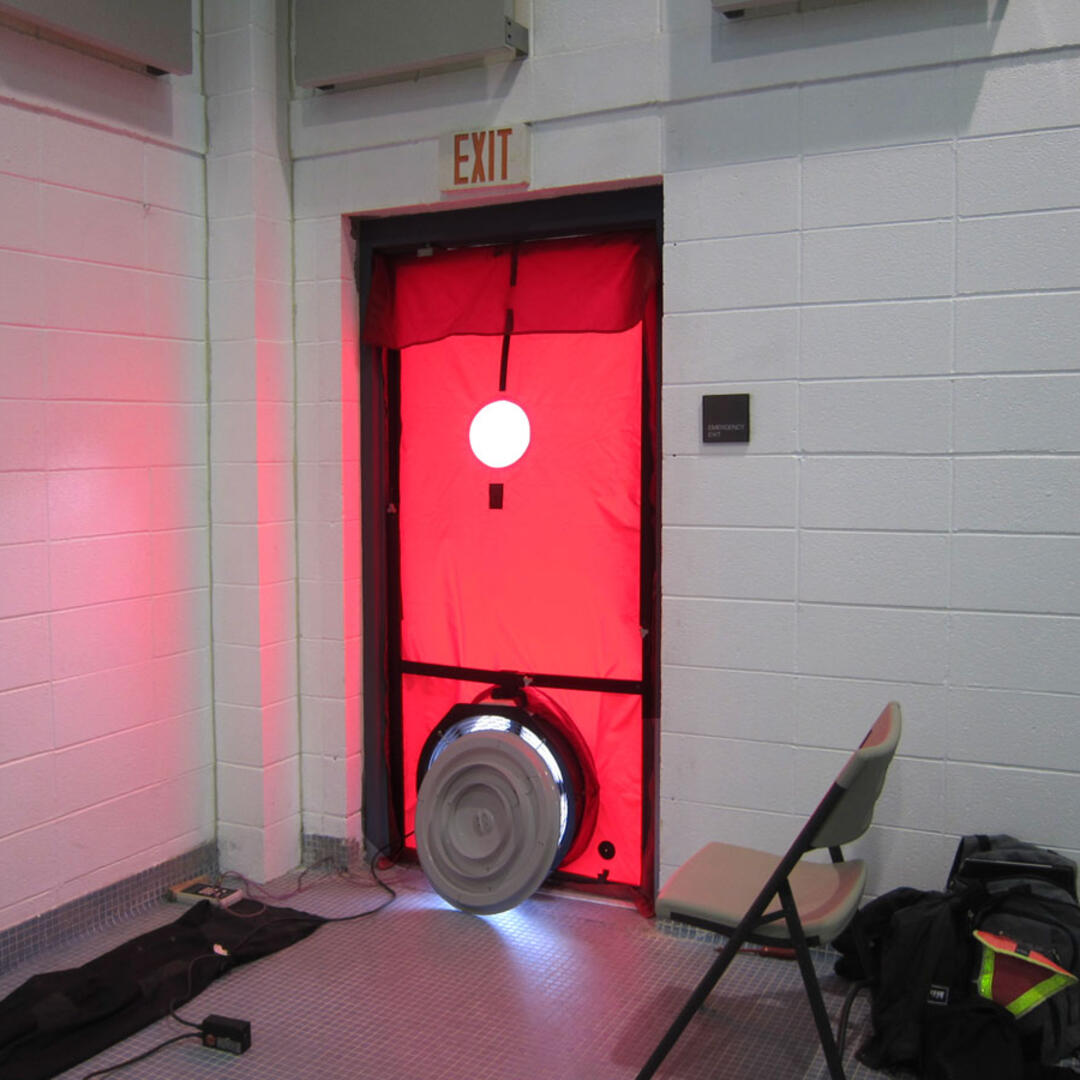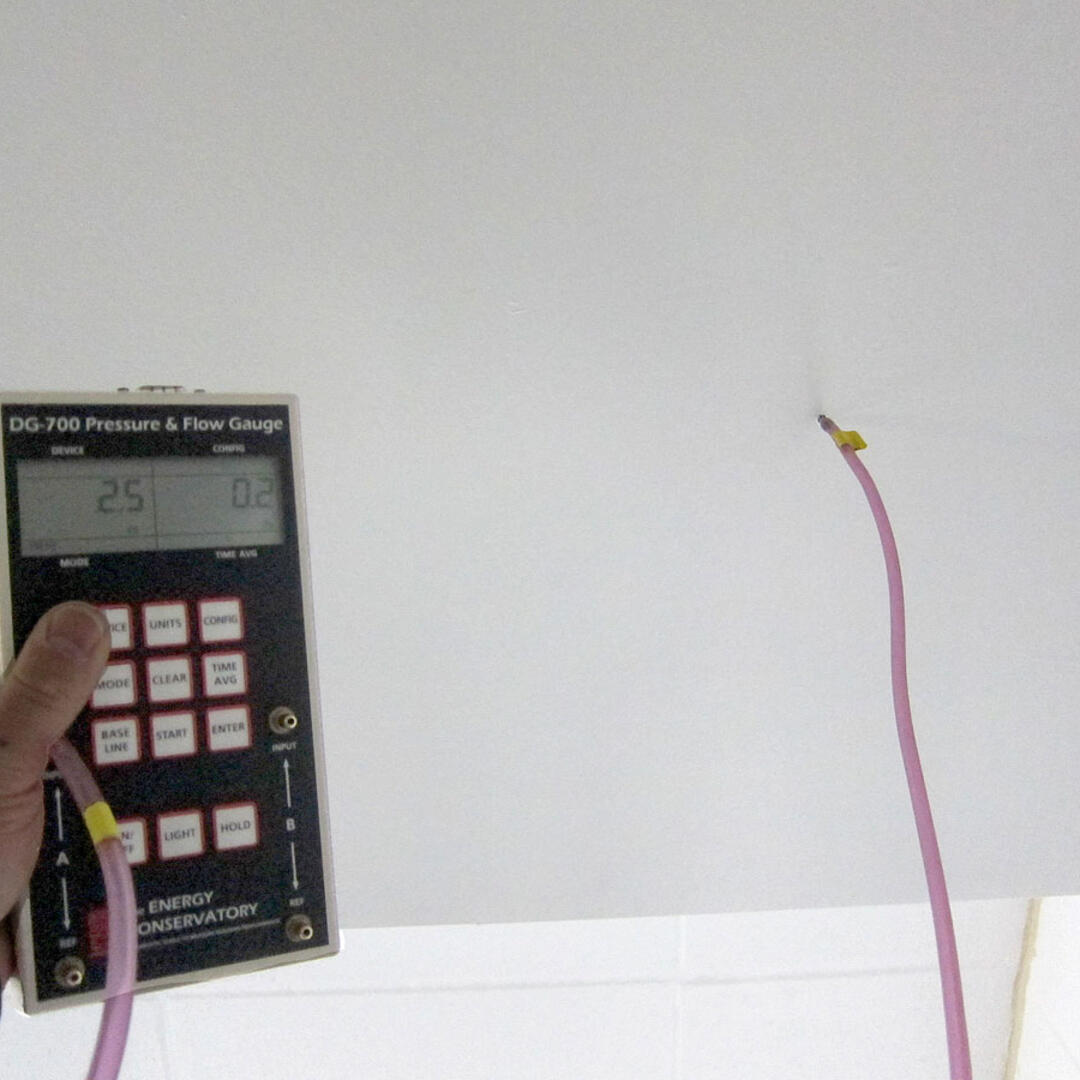BSC investigated the cause of efflorescence staining at a recently-reclad pool and recreation building in upstate New York. This efflorescence staining was occurring at the top of the exterior brick veneer, during the first winter after the completion of the project. Efflorescence is caused by liquid water transport of dissolved salts through porous materials, followed by evaporation and recrystalization of the salt, resulting in the visible staining. In the field investigation, differential interzonal pressure measurements were taken to “pressure map” the pool and surrounding spaces, thus determining the airflow patterns in the operating building. Intrusive disassembly of the parapet was performed to determine the roof-to-wall connection detail. Although the wall and roof were both constructed with robust and continuous air barriers, the connection between the wall and the roof was not completed. This resulted in air leakage at this detail, followed by condensation of warm humid pool air in the brick cavity, and the resulting efflorescence. This air leakage was demonstrated conclusively by pressurizing the pool with a blower door: a distinct chlorine odor and humid air were detected at the opening at the parapet. In addition, BSC also performed air leakage testing from the interior to localize possible air leakage sites and to verify the presence of air barrier imperfections.

Main navigation
- Our Services
- Articles & Papers
- Guidance
- Popular Topics
- Building Science Live
- Bookstore
- Events & Training
